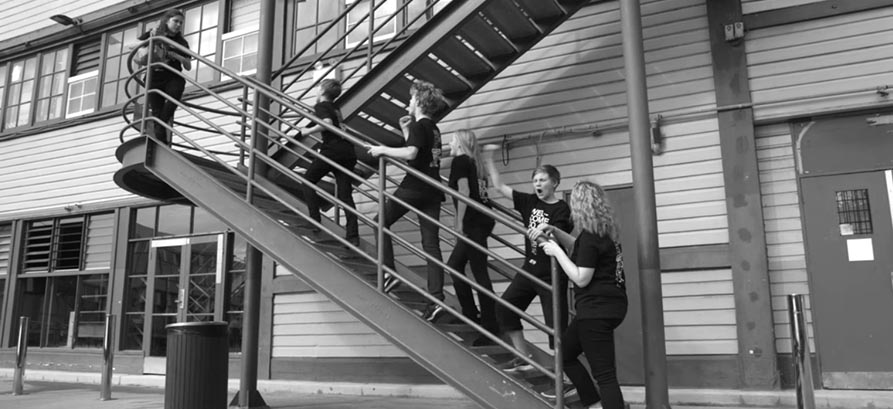Australian Theatre for Young People (ATYP) and The Song Room have partnered to create an ARTS:LIVE resource focusing on site-specific theatre. Our new Plan a Performance course features the Site-Specific Work activity, rich in contemporary contexts but inspiring students to delve deep into history. Members of ATYP took to Sydney’s docks to demonstrate what makes a site interesting and show you how to turn a place into a performance space.
Overview
In Site-Specific Work students develop and apply their playbuilding skills in a new environment. This dramatic form encourages students to consider the context of a performance and the perspective of the audience.
Head to ‘Put on a Performance: Site-Specific Work‘ for more information.

Background
Site-specific theatre occurs in a specific location, often outdoors. It is inextricably linked to the site in which the performance takes place. Much site-specific work provides insight into a culturally or historically significant event. An informative theatrical dramatisation of historical events often results from the development process. It is an interesting way to integrate real-life fact into dramatic fiction. Companies such as Punchdrunk and Theatre-Rites use site-specific processes as the backbone of their creative practice. Much political, event-based and street theatre is site specific. The manifestos of Augusto Boal and Bertolt Brecht are often personified in site-specific work. This type of theatre is often interactive for the audience, as they may be required to move to various locations throughout the show or view the action from unusual vantage points
Activities
In this resource, students analyse the site-specific performance Quay to the City (2013) by the Australian Theatre for Young People (ATYP). Students explore how the elements of drama can be used in a site, and how they can integrate their bodies and voices into the location and create a relevant atmosphere and mood. They research the social and historical significance of their chosen site and work collaboratively to create their own performance. Students consider the perspectives of their audience, reflect on their own and others’ work by watching the performances of their peers, critique dramatic process and performance, and discuss their shared experiences as a group.


